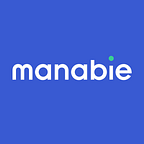Marvelous Applications of Hick’s Law in Digital Products
“Why is it taking me so long to choose yogurt?”
If you’ve ever found yourself frustrated over a relatively minor choice like choosing yogurt at the supermarket, you’re not alone.
The yogurt stand at the supermarket is one demonstration of too many choices. Hundreds of options are available from flavors to sizes. Plus, all are displayed right in front of the customers’ eyes.
This is Hick’s Law in action.
Hick’s Law (or the Hick-Hyman Law) is named after a British and an American psychologist team of William Edmund Hick and Ray Hyman. In 1952, this pair set out to examine the relationship between the number of stimuli present and an individual’s reaction time to any given stimulus. They found that when confronted with an expansive list of choices, most people will take a long time to make a decision — and the longer they take, the more frustrated and irritated they feel. The more options available, the more the human mind struggles to choose.
Hick’s Law is “The time it takes to make a decision increases with the number and complexity of choice.”
Or for you math and science folks out there, Hick’s law is defined as RT = a + b log2 (n)
So, we’re overwhelmed at the supermarket sometimes because of Hick’s Law. What does that have to do with tech? Everything, actually. Hick’s Law plays a role in almost all digital products.
Over the years, the number of accumulated features of products has increased significantly. But this might be a reason for the number of matrix choices, which not only prevents users from making an appropriate decision but also reduces conversion rates unpredictably. Essentially, users feel overwhelmed and just give up. Designers can solve this by applying Hick’s Law — creating effective designs while striving for lean information and clarity.
In this post, we’ll provide the best tips for using Hick’s Law to significantly increase the usability of your product.
Optimizing your product with Hick’s Law
Let’s start by discussing how you can enhance these features:
A. Navigation system (drop-down/mega-menu, navigation, filters, widget menu,…)
B. Tabs and chips components (form filling,…)
C. Checkout or onboarding process
D. Inquiry pages (Search, filter options,…)
A. Navigation System: Categorizes and personalizes choices
E-commerce sites are using this as an effective solution, especially in the mega menu, to help users navigate through their various collections of product categories. By grouping products into subcategories, these sites have nailed down where to start for users and guiding them to the products they are looking for.
Sites like Asos or Etsy have grouped the menu items into high-level categories. The highest level is put on the main navigation. Then, under each menu item, products are grouped into subcategories, which each can have a lower level division, in the case of Etsy’s menu.
This design provides enough information for users to get started when entering sites. As the users dive deeper under each sub-level menu, they are able to explore more options without much confusion.
B. Tabs & Chips Component: Useful for reducing options
Form-filling usually takes a lot of time and effort. In the era when time is a valuable asset, a user might abandon a form altogether if there are too many input fields.
In order to limit the action of filling forms, many apps and websites let users sign up by using their social network account. Other food delivery apps, such as Grab Food, remember users’ last purchase and offer a “reorder” function. Another notable application is Apple Wallet where all purchases are done right on the smartphone.
C. Infinity Flows: Breaks down based on information type or objectives
In some cases, the complexity of the process cannot be limited. Therefore, designers can consider breaking these down into steps. This practice can be usually seen in the “Sign-up”, “Onboarding” and “Checkout” process. The purpose of this method is to reduce the user’s cognitive overload.
In this situation, Manabie needs students to provide their personal and school information when setting up accounts. Each screen requires no more than three input fields, is designed to be selected rather than typed in, and provides a progress bar, which allows students to keep track of their input completion.
By breaking down the process into smaller chunks on separate screens, designers will be able to keep users moving to the end of the process without quitting halfway through.
D. Inquiry Pages/ Screen: Keep design minimal
Yet, under some circumstances, a product can have numerous complex options that would be difficult to categorize or limit. Though this is still a debatable subject, hiding some presets or choices can be a good solution.
Airbnb is a good example to examine, especially the filter options menu. Besides six main filters displayed straight away, the company hides other specific settings under the “more filters” button, which will open as a pop-up modal.
One note about this approach is that it would require proper user research to know which options should be prioritized. Practicing this wisely will not add friction to the process but create a much more seamless user experience.
Key take-aways to applying Hick’s Law to product design
- Categorize the options within a navigation system (drop-down menu, filters, etc)
- Limit the number of choices
- Use progressive onboarding to minimize cognitive load for new users
- Prioritize which options should be presented to users and hide unnecessary ones
Conclusion
Everybody wants to save time. By applying Hick’s Law in UX design, we can reduce the amount of time needed for a user to accomplish what they need to, allowing us to keep them satisfied.
Please feel free to share your thoughts with us below. Thank you for reading!
If you would like to join Manabie and work together to create a positive impact in education, visit us at: manabie.com/careers
